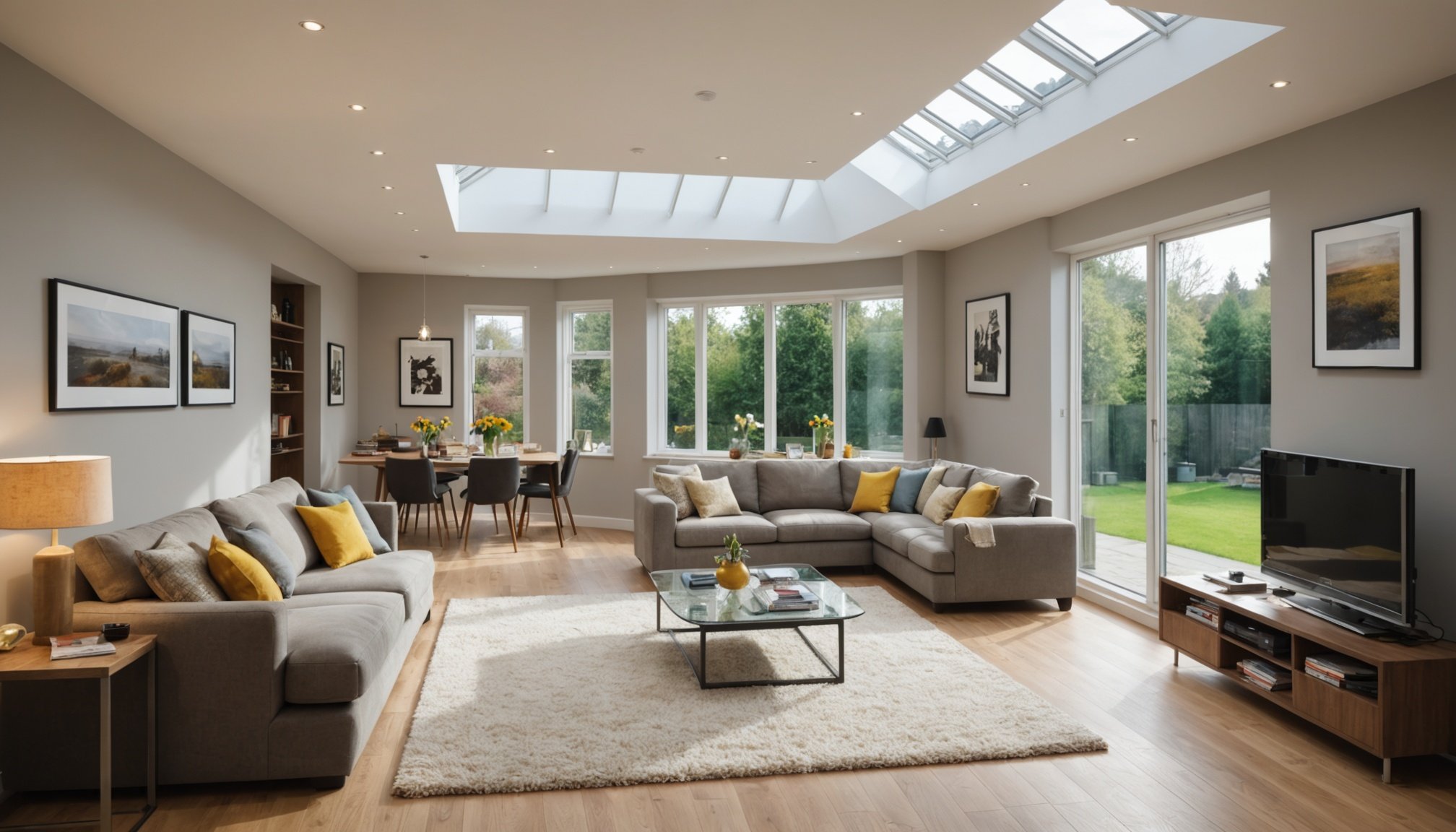Understanding the Importance of Natural Light in Basement Conversions
In basement conversions, natural light is a game changer. It not only transforms dim, oppressive spaces into airy, inviting environments but also significantly enhances the overall atmosphere of a home. The benefits of natural light extend beyond mere aesthetics, deeply impacting psychological well-being by fostering feelings of positivity and mental clarity. Regular exposure to natural light is known to boost mood and increase productivity, making the space more functional and enjoyable.
Moreover, when we consider the advantages of basement conversion, integrating natural light becomes instrumental. Bright, well-lit basements add value to properties, presenting them as versatile living spaces rather than mere storage areas. This can be particularly appealing to potential buyers, thus increasing the property’s marketability and potential selling price.
In the same genre : Essential Components for Crafting a Genuine Coastal Bathroom Inspired by the UK
Additionally, enhancing a basement with natural light also carries health benefits. Exposure to natural brightness helps regulate the body’s circadian rhythms, which can improve sleep quality and overall health. In essence, incorporating natural light into basement conversions is not just about aesthetics; it is a multidimensional strategy that significantly impacts the quality of life, economic value, and health of the inhabitants.
Innovative Strategies to Maximize Natural Light
Enhancing natural light in a space requires thoughtful design strategies. Here are some techniques focusing on windows and skylights.
Topic to read : Essential Insights for Seamlessly Adding a Mezzanine to Your UK Loft Conversion
Use of Windows and Skylights
When planning the placement of windows, consider their size and orientation. Optimal window positioning is crucial for capturing maximum sunlight, particularly in areas that typically lack natural brightness. Skylights are invaluable in deep basements, where light can struggle to penetrate. They allow light to flood into spaces that don’t have direct access to wall windows. When installing skylights, ensure they are appropriately angled to maximise sunlight exposure while minimizing glare and heat gain.
However, it’s crucial to design these elements carefully to avoid light obstruction. This can occur through poorly placed furniture or architectural features that block the flow of natural light. Strategic placements, such as high windows that capture maximum daylight, and open-plan interiors can significantly enhance the distribution of sunlight throughout your home.
Using such light-maximizing techniques, not only increases the efficiency of natural lighting but can also reduce the dependency on artificial lighting, contributing to energy savings and a more sustainable living environment. These innovative strategies form the backbone of effective interior design that prioritizes light.
Integrating Technology for Enhanced Lighting
Implementing smart lighting solutions in modern home design can dramatically improve both functionality and aesthetics. These systems offer a dynamic range of options, ensuring that users can tailor their environments to be as versatile or specific as desired.
Smart Lighting Systems
Smart lighting systems provide a plethora of options for automated lighting. They allow for seamless control of lighting settings, from adjusting brightness levels to scheduling on/off times, thereby enhancing user convenience. The benefits of adjustable lighting are not limited to customisation alone; they also contribute to energy efficiency by tailoring light usage to actual need. Advanced control systems, often operated via smartphones or voice assistants, further augment the user experience. Such technology in home design is rapidly becoming a staple for those desiring both efficiency and modern convenience.
LED Technology
The advantages of LED lighting are both ecological and economical. Specifically in basements, LED lights offer energy efficiency by consuming up to 80% less electricity compared to traditional bulbs. Their longevity significantly reduces environmental impact through decreased waste. LED lights also afford extensive customisation options, enabling changes in colour and brightness that can alter mood or ambience seamlessly. This flexibility makes LED technology an invaluable component of contemporary lighting solutions.
UK Building Regulations and Compliance
Navigating building laws for basement conversions in the UK requires understanding specific regulations and compliance measures. These regulations ensure the safety and livability of converted spaces.
Overview of Basement Conversion Regulations
Basement conversions must comply with regulations concerning structure, safety, and sanitation. This includes ensuring adequate ceiling height, proper insulation, and fire safety measures.
Safety Considerations
Safety is paramount when it comes to basement conversions. Natural light requirements, for instance, play a significant role in determining the suitability of a basement for habitation. Adequate egress points and ventilation systems are also essential to ensure occupant safety.
Permitting Processes
Before commencing any renovation, securing the necessary permits is crucial. The UK has stringent permitting processes that typically involve submitting detailed plans to local authorities. This ensures that renovations meet legal standards and are safe for use.
These processes can be time-consuming, but they are essential to avoid future legal issues. Property owners should consult with professional surveyors or architects familiar with UK basement conversion regulations to streamline this process.
By adhering to these guidelines, homeowners can confidently convert basements into functional living areas while ensuring safety and compliance with UK building laws.
Successful Case Studies of Basement Conversions
Illustrating inspiring transformations, case studies of basement conversions offer valuable insights and strategies for successfully incorporating natural light.
Before and After Analyses
Engaging comparative studies reveal the transformation of dim basements into welcoming spaces. These analyses highlight various strategies employed, focusing on elements like the use of reflective surfaces and strategic window placements to enhance natural light. Interviews with designers reveal practical insights into the challenges and triumphs experienced during these projects.
- Natural Light Incorporation: Architects achieved this by expanding existing windows, using glass doors, and adding light wells. These approaches prove that thoughtful design can significantly alter a space’s ambiance and utility.
Lessons Learned from Each Case
Each case study underscores both common challenges and innovative solutions in basement conversions.
-
Common Challenges: Addressing limited natural light and low ceilings were frequent concerns. Creative solutions, such as using lighter colour palettes and artificial lighting adjustments, were instrumental in overcoming these obstacles.
-
Unique Approaches: Some projects utilized unique architectural features, like mirrored walls, to maximise light distribution. Feedback was continuously integrated, ensuring final outcomes met or exceeded expectations.
In essence, these successful conversions highlight the pivotal role of creative planning and responsiveness to client and environmental needs.











